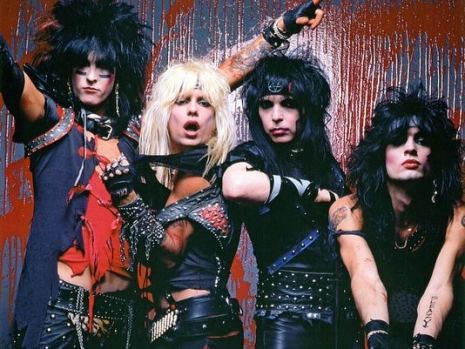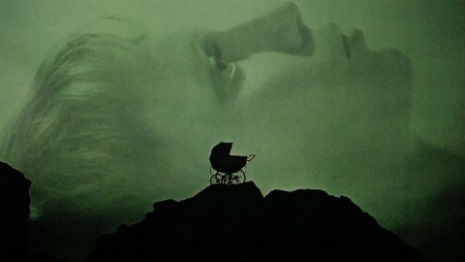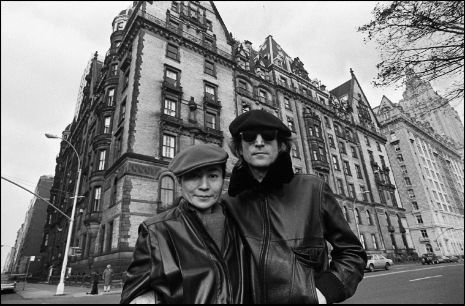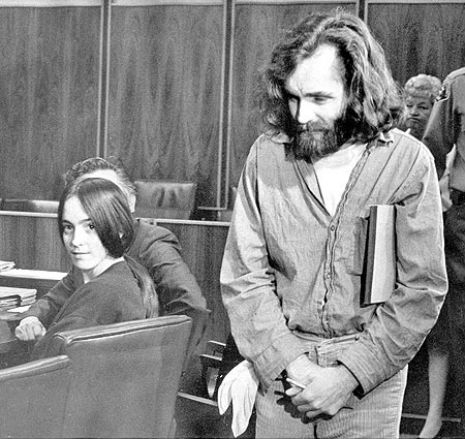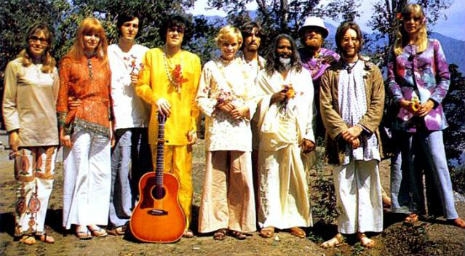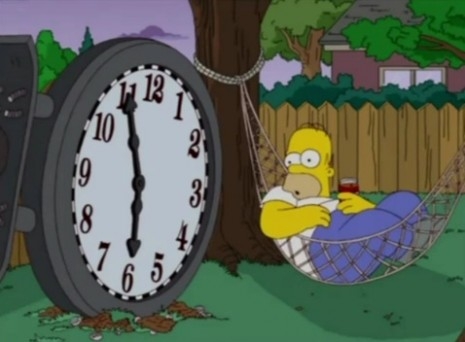
The standard modus operandi of a work of “conspiracy theory” is fairly straightforward. The author/researcher takes some commonly accepted historical narrative, and lavishes scepticism upon it, while simultaneously maintaining an alternative understanding of what “really” happened, one that ostensibly better fits the considered facts.
While Dave McGowan’s Weird Scenes Inside the Canyon : Laurel Canyon, Covert Ops & The Dark Heart of the Hippie Dream, indubitably follows this approach, its focus is utterly unique. Not to put too fine a point on it, the book is no less than the Official Classic Rock Conspiracy Theory, with individual chapters tackling the unlikely subjects of Frank Zappa, the Doors, Love, the Beach Boys, the Byrds, Gram Parsons and more, the careers of which are scrutinized for the fingerprints of the secret state.
What you make of McGowan’s criteria in and of itself (which ranges fairly widely, and at times wildly, from a “tell-tale” preoccupation with the occult to heavy military-industrial family ties), to my mind the virtue of Weird Scenes dwells in the ensuing atmosphere of incredible fairy-tale strangeness—not unlike Joan Didion’s own famous look at California in the late sixties, The White Album. On almost every page, movie-star mansions, knitted with secret passages, spontaneously combust; murders, suicides and overdoses spread through the celebrity populace; cults spring up peopled with mobsters and spies… and all the while, this timeless, intriguing music keeps on geysering away. I contacted McGowan about his bizarre book earlier this week…
Thomas McGrath: Hi Dave. Could you begin please by telling us something about your previous work?
David McGowan: My work as a political/social critic began around 1997, when I began to see signs that the political landscape in this country was about to change in rather profound ways. That was also the time that I first ventured onto the internet, which opened up a wealth of new research possibilities. I put up my first website circa 1998, and an adaptation of that became my first book, Derailing Democracy, in 2000. That first book, now out of print, was a warning to the American people that all the changes we have seen since the events of September 11, 2001 – the attacks on civil rights, privacy rights, and due process rights; the militarization of the nation’s police forces; the waging of multiple wars; the rise of surveillance technology and data mining, etc. – were already in the works and just waiting for a provocation to justify their implementation. My second book, Understanding the F-Word, was a review of twentieth-century US history that attempted to answer the question: “if this is in fact where we’re headed, then how did we get here?” Since 9-11, I’ve spent a good deal of time researching the events of that day and looked into a wide range of other topics. My third book, Programmed to Kill, was a look at the reality and mythology of what exactly a serial killer is. For the past six years, I have spent most of my time digging into the 1960s and 1970s Laurel Canyon counterculture scene, which has now become my fourth book, Weird Scenes Inside the Canyon.
Thomas McGrath: Am I right in presuming that you take it as a given fact that power networks are essentially infected by occultism? Are these cults essentially Satanic, or what?
David McGowan: Yes, I do believe that what you refer to as power networks, otherwise known as secret societies, are occult in nature. The symbolism can be seen everywhere, if you choose not to maneuver your way through the world deaf, dumb and blind. And I believe that it has been that way for a very long time. As for them being Satanic, I suppose it depends upon how you define Satanic. I personally don’t believe the teachings of either Satanism or Christianity, which are really just opposite sides of the same coin. I don’t believe that there is a God or a devil, and I don’t believe that those on the upper rungs of the ladder on either side believe so either. These are belief systems that are used to manipulate the minds of impressionable followers. In the case of Satanism, it is, to me, a way to covertly sell a fascist mindset, which is the direction the country, and the rest of the world, is moving. Those embracing the teachings think they are rebelling against the system, but they are in reality reinforcing it. Just as the hippies did. And just as so-called Patriots and Anarchists are. I don’t believe there has been a legitimate resistance movement in this country for a very long time.
Thomas McGrath: Tell us about Weird Scenes Inside the Canyon. What is this new book’s central thesis?
David McGowan: To the extent that it has a central thesis, I would say that it is that the music and counterculture scene that sprung to life in the 1960s was not the organic, grassroots resistance movement that it is generally perceived to be, but rather a movement that was essentially manufactured and steered. And a corollary to that would be that for a scene that was supposed to be all about peace, love and understanding, there was a very dark, violent underbelly that this book attempts to expose.
Thomas McGrath: How convinced are you by it and why?
David McGowan: Very convinced. It’s been a long journey and virtually everything I have discovered – including the military/intelligence family backgrounds of so many of those on the scene, both among the musicians and among their actor counterparts; the existence of a covert military facility right in the heart of the canyon; the prior connections among many of the most prominent stars; the fact that some of the guiding lights behind both the Rand Corporation and the Project for a New American Century were hanging out there at the time, as were the future governor and lieutenant governor of California, and, by some reports, J. Edgar Hoover and various other unnamed politicos and law enforcement personnel; and the uncanny number of violent deaths connected to the scene – all tend to indicate that the 1960s counterculture was an intelligence operation.
Thomas McGrath: You propose that hippie culture was established to neutralise the anti-war movement. But I also interpreted your book as suggesting that, as far as you’re concerned, there’s also some resonance between what you term “psychedelic occultism” (the hippie counterculture) and the “elite” philosophy/theology? You think this was a second reason for its dissemination?
David McGowan: Yes, I do. Hippie culture is now viewed as synonymous with the anti-war movement, but as the book points out, that wasn’t always the case. A thriving anti-war movement existed before the first hippie emerged on the scene, along with a women’s rights movement, a black empowerment/Black Panther movement, and various other movements aimed at bringing about major changes in society. All of that was eclipsed by and subsumed by the hippies and flower children, who put a face on those movements that was offensive to mainstream America and easy to demonize. And as you mentioned, a second purpose was served as well – indoctrinating the young and impressionable into a belief system that serves the agenda of the powers that be.
Thomas McGrath: One thing your book does very convincingly, I think, is argue that many if not most of the main movers in the sixties counterculture were, not to put too fine a point on it, horrendous, cynical degenerates. However, one might argue that a predilection for drugs, alcohol, and even things like violence and child abuse, does not make you a member of a government cult. You disagree?
David McGowan: No. I’ve known a lot of people throughout my life with a predilection for drugs and alcohol, none of whom were involved in any cults, government or otherwise. And I don’t believe that a predilection for drugs makes one a degenerate. The focus on drug use in the book is to illustrate the point that none of the scene’s movers and shakers ever suffered any legal consequences for their rampant and very open use of, and sometimes trafficking of, illicit drugs. The question posed is why, if these people were really challenging the status quo, did the state not use its law enforcement powers to silence troublemakers? I do have zero tolerance for violence towards and abuse of children, which some people in this story were guilty of. But that again doesn’t make someone a member of a cult – though it does make them seriously morally challenged.
Thomas McGrath: You say in the book that you were always a fan of sixties music and culture. Weirdly, I found that, even while reading Weird Scenes, I was almost constantly listening to the artists you were denouncing. I mean, I found albums like Pet Sounds, Forever Changes, Return of the Grievous Angel,et al sounded especially weird in the context, but I still couldn’t resist sticking them on. I was wondering if you still listen to these records yourself?
David McGowan: Yes, I do. The very first rock concert I ever attended was Three Dog Night circa 1973 – a Laurel Canyon band, though I did not know that until about five years ago. To my mind, the greatest guitarist who ever lived was Jimi Hendrix, and Janis Joplin was arguably the finest female vocalist – in terms of raw power and emotion – to ever take the stage. I don’t know that it is accurate to describe my book as “denouncing” various artists. Brian Wilson, who composed Pet Sounds, is described as the finest and most admired composer of his generation. The guys from Love, architects of Forever Changes, are presented as among the most talented musicians of the era. Frank Zappa is acknowledged as an immensely talented musician, composer and arranger. And so on. It is true that I believe that some of the most famed artists to emerge from Laurel Canyon are vastly overrated, with Jim Morrison and David Crosby quickly coming to mind. And it’s true that on some of the most loved albums that came out of the canyon, the musicians who interpreted the songs weren’t the ones on the album covers. And it’s also true that, unlike other books that have covered the Laurel Canyon scene, Weird Scenes doesn’t sugarcoat things. But the undeniable talent and artistry of many of the canyon’s luminaries is acknowledged. And the book also shines a little bit of light on some of the tragically forgotten figures from that era, like Judee Sill and David Blue, which could lead to readers rediscovering some of those artists and the talents that they had to offer.
Weird Scenes Inside the Canyon: Laurel Canyon, Covert Ops & The Dark Heart of the Hippie Dream is available now in special pre-release hardback only from Headpress. The paperback is out next month, and should be available from all strange bookshops.
Previously on Dangerous Minds:
Beyond the Doors: Conspiracy theories about the deaths of Jimi, Janis and Jim
